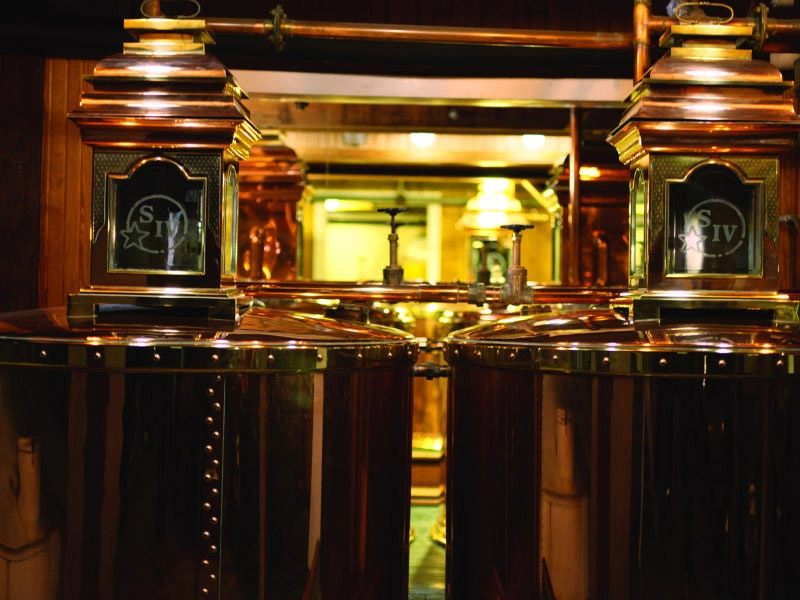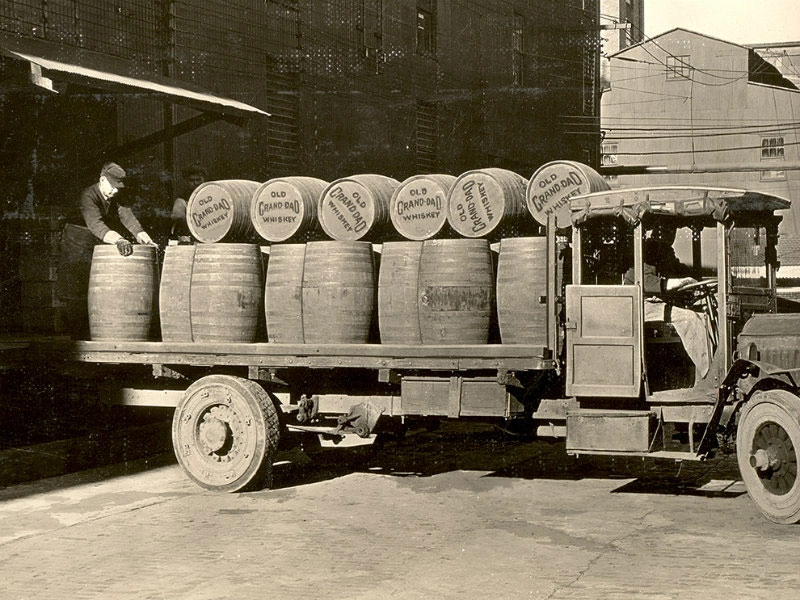Bourbon Production
America’s whiskey is protected by many rules that protect everything from local industry, to the integrity of the flavour, proof, and the age at which Bourbon must be bottled. These regulations protect Bourbon and guard against producers taking shortcuts.

The Law
THE DIFFERENCE ISN'T JUST SEMANTICS
IT'S THE LAW
All bourbon is whiskey, but not all whiskey is bourbon. A strict set of standards from the government regulates what's what. Learn more about what defines "America's native spirit" and the difference between bourbon and whiskey below.
1. Made in United States of America
2. Product from a fermented mash of 51% corn at least.
3. Distilled at no more than 160 proof
4. Stored at no more than 125 proof in new, charred oak barrels.
5. Aged for minimum two years.
6. Free from additives.
Because of this all bourbon is whiskey, not all whiskey can be called bourbon. Then there's Kentucky Straight Bourbon Whiskey, like Jim Beam® ®, which in addition to the rules above, must also be made in Kentucky.
The type of grain
An initial recipe of grains or ‘mash bill’ that is blended to achieve a specific flavour profile. By law, Bourbon must contain a minimum of 51% corn. The rest of the mash bill is generally made up of a mix of rye, wheat and barley.
%20The%20Type%20of%20Grain_800.jpg.webp?itok=nR7SWEMR)
%20Fermentation_800.jpg.webp?itok=bukztui5)
Fermentation
After the chosen mash bill is acquired, the mix is cooked, generally adding different grains at different times. After cooking the entire mix of solids and wort are separated. Dr James Crow is said by some to have perfected the ‘sour mash’ process in the 1830s. In this process, the tails or spent mash of one batch is added into the fermenting mash of the next to raise the PH level of the mash and create the ideal environment for yeast to propagate and get to work on processing the sugars. It does not contribute any ‘sour’ flavours to the whiskey.
Distillation
Column stills are most frequently used when it comes to bourbon production, however, in contrast to vodka, gin and many other column distilled spirits – the distillate is pulled off the still at a relatively low ABV, usually after being distilled once to retain the integrity and character of the grain.
Bourbon stills have a modification called a ‘doubler’, akin to a small pot still where the spirit is drawn off the main column (usually at around 55% ABV) and is redistilled to a level of around 60% ABV. This ‘doubler’ is often referred to as the ‘thumper’ because of the noise generated at the start of distillation. By law, you are unable to distil the spirit to higher than 80% ABV, again to retain the flavour of the grain.


American new white oak barrels
Bourbon whiskey must be aged in brand new American white oak barrels. Reasons for this are varied but include helping to preserve the local American cooperage industry as well as promoting the chemical reactions that take place between whiskey and barrel. New American oak contains several compounds like tannins, lactones, vanillin, and hemicellulose, all of which diffuse into the spirit to lend flavour and colour.
Maturation
Bourbon Whiskey must be matured for a minimum of two years to be called straight bourbon. Bourbon cannot be aged in a barrel above 62.5% ABV. For the Bourbon to be classified as ‘Bottled in Bond’, the whiskey must be aged for at least four years and be distilled in one season, at one distillery and be bottled at a minimum of 50% ABV.
Bourbon is aged in a warehouse (or Rickhouse). A rickhouse generally will be stacked with barrels six to nine stories high where they are highly susceptible climatic change, which will, in turn, promote temperature fluctuations that impact the resulting rate of maturation. This evaporation of spirit over time it's what’s known as the Angel’s Share, and ultimately concentrates the spirit. Between 2 and 4 per cent of the total cask volume will evaporate each year
No additives are permitted at any stage of the bourbon-making process. The only thing that can be added is water.
%20MATURATION_800.jpg.webp?itok=uF2go5hi)

Learn more about the timeline of Bourbon.
